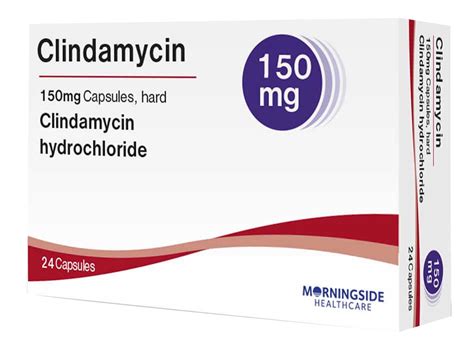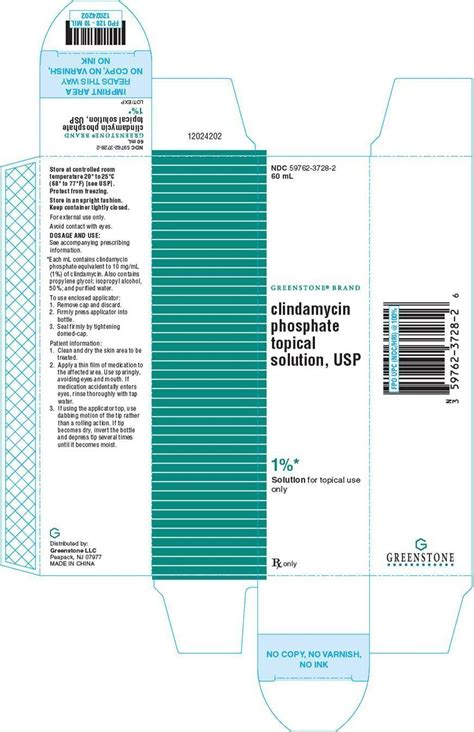Intro
Discover what Clindamycin is, a powerful antibiotic treating bacterial infections, acne, and skin issues, with insights into its uses, side effects, and interactions, exploring its role in medicine as an effective antimicrobial agent.
Clindamycin is a medication that has been widely used in the medical field for several decades. It is an antibiotic that belongs to the class of lincosamides, which are a group of antibiotics that are derived from the bacterium Streptomyces lincolnensis. Clindamycin is primarily used to treat bacterial infections, including skin infections, respiratory tract infections, and infections of the abdomen and pelvis. It works by inhibiting the growth of bacteria, ultimately leading to their death.
The importance of clindamycin cannot be overstated, as it has been a crucial medication in the treatment of various bacterial infections. With the rise of antibiotic resistance, clindamycin has become an essential alternative to other antibiotics that have lost their effectiveness. Moreover, clindamycin has been shown to be effective against a wide range of bacteria, including those that are resistant to other antibiotics. As a result, it is essential to understand the benefits, working mechanisms, and potential side effects of clindamycin to ensure its safe and effective use.
Clindamycin has several benefits that make it a popular choice among healthcare professionals. It is effective against a wide range of bacteria, including anaerobic bacteria, which are bacteria that thrive in environments with low oxygen levels. Additionally, clindamycin has been shown to be effective in treating infections that are resistant to other antibiotics. It is also available in various forms, including capsules, tablets, and topical creams, making it easy to administer and use. Furthermore, clindamycin has been shown to have a relatively low risk of side effects, especially when compared to other antibiotics.
How Clindamycin Works

The working mechanism of clindamycin is complex and involves several steps. First, clindamycin is absorbed into the bloodstream, where it is distributed to various parts of the body. It then binds to the bacterial ribosome, where it inhibits protein synthesis. This leads to a decrease in the production of essential proteins, which are necessary for bacterial growth and survival. Eventually, the bacteria die, and the infection is cleared.
Benefits of Clindamycin
The benefits of clindamycin are numerous and well-documented. Some of the most significant benefits include: * Effective against a wide range of bacteria, including anaerobic bacteria * Available in various forms, including capsules, tablets, and topical creams * Relatively low risk of side effects, especially when compared to other antibiotics * Effective in treating infections that are resistant to other antibiotics * Can be used to treat a variety of infections, including skin infections, respiratory tract infections, and infections of the abdomen and pelvisTypes of Clindamycin

Each type of clindamycin has its own unique benefits and uses. For example, clindamycin hydrochloride is often used to treat skin infections, while clindamycin phosphate is often used to treat acne and other skin conditions.
Side Effects of Clindamycin
While clindamycin is generally well-tolerated, it can cause several side effects, including: * Diarrhea * Nausea and vomiting * Abdominal pain * Rash * ItchingThese side effects are usually mild and temporary, but in some cases, they can be severe and require medical attention. It is essential to follow the recommended dosage and administration instructions to minimize the risk of side effects.
Uses of Clindamycin

Clindamycin is also used to treat other conditions, such as acne and other skin conditions.
Precautions and Warnings
While clindamycin is generally safe and effective, there are several precautions and warnings to be aware of, including: * Allergic reactions: Clindamycin can cause allergic reactions, including anaphylaxis. * Antibiotic resistance: Clindamycin can contribute to the development of antibiotic resistance. * Interactions with other medications: Clindamycin can interact with other medications, including blood thinners and certain antibiotics.It is essential to follow the recommended dosage and administration instructions and to consult with a healthcare professional before taking clindamycin.
Administration and Dosage

It is essential to follow the recommended dosage and administration instructions to ensure the safe and effective use of clindamycin.
Special Considerations
There are several special considerations to be aware of when taking clindamycin, including: * Pregnancy and breastfeeding: Clindamycin is generally safe to use during pregnancy and breastfeeding, but it is essential to consult with a healthcare professional before taking it. * Pediatric use: Clindamycin is generally safe to use in children, but the dosage and administration instructions may vary depending on the child's age and weight. * Geriatric use: Clindamycin is generally safe to use in older adults, but the dosage and administration instructions may vary depending on the individual patient's needs.It is essential to consult with a healthcare professional before taking clindamycin, especially if you have any underlying medical conditions or are taking other medications.
Conclusion and Final Thoughts

To ensure the safe and effective use of clindamycin, it is essential to follow the recommended dosage and administration instructions and to consult with a healthcare professional before taking it. Additionally, it is essential to be aware of the potential risks and benefits of clindamycin and to take steps to minimize the risk of side effects.
We invite you to share your thoughts and experiences with clindamycin in the comments below. Have you taken clindamycin before? What were your experiences with it? Do you have any questions or concerns about clindamycin? We would love to hear from you and provide you with the information and support you need.
What is clindamycin used for?
+Clindamycin is used to treat a variety of bacterial infections, including skin infections, respiratory tract infections, and infections of the abdomen and pelvis.
What are the side effects of clindamycin?
+The side effects of clindamycin include diarrhea, nausea and vomiting, abdominal pain, rash, and itching.
How do I take clindamycin?
+The administration and dosage of clindamycin vary depending on the type of infection being treated and the individual patient's needs. It is essential to follow the recommended dosage and administration instructions and to consult with a healthcare professional before taking clindamycin.
Can I take clindamycin during pregnancy and breastfeeding?
+Clindamycin is generally safe to use during pregnancy and breastfeeding, but it is essential to consult with a healthcare professional before taking it.
What are the precautions and warnings for clindamycin?
+The precautions and warnings for clindamycin include allergic reactions, antibiotic resistance, and interactions with other medications.









